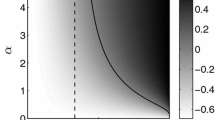Motivated by a recent proof of free choices in linking equations to the experiments they describe, I clarify some relations among purely mathematical entities featured in quantum mechanics (probabilities, density operators, partial traces, and operator-valued measures), thereby allowing applications of these entities to the modeling of a wider variety of physical situations. I relate conditional probabilities associated with projection-valued measures to conditional density operators identical, in some cases but not in others, to the usual reduced density operators. While a fatal obstacle precludes associating conditional density operators with general non-projective measures, tensor products of general positive operator-valued measures (POVMs) are associated with conditional density operators. This association together with the free choice of probe particles allows a postulate of state reductions to be replaced by a theorem. An application shows an equivalence between one form of quantum key distribution and another with respect to certain eavesdropping attacks.
Similar content being viewed by others
References
Madjid F.H., Myers J.M. (2005) “Matched detectors as definers of force”. Ann. Phys. (N.Y.) 319, 251–273 also arXiv:quant-ph/0404113 v2 (2004).
A. J. Leggett, “The quantum measurement problem,” Science 307, 871–872 (2005); for a beachhead into more discussion of interpretations, see S. Malin, Nature Loves to Hide (Oxford University Press, New York, 2001), App. 3; P. Busch, P. J. Lahti, and P. Mittelstaedt, The Quantum Theory of Measurement (Springer-Verlag, Berlin, 1991); J. A. Wheeler and W. H. Zurek, eds., Quantum Theory and Measurement (Princeton University Press, Princeton, NJ, 1983).
J. M. Myers and F. H. Madjid, “A proof that measured data and equations of quantum mechanics can be linked only by guesswork,” in Quantum Computation and Information, S. J. Lomonaco, Jr. and H. E. Brandt, eds., Cont. Math. Ser. 305 (Amer. Math. Soc., Providence, RI, 2002), pp. 221–244.
Myers J.M., Madjid F.H. (2002). “Gaps between equations and experiments in quantum cryptography”. J. Opt. B: Quantum Semiclass. Opt. 4, S109–S116
Gisin N., Ribordy G., Tittel W., Zbinden H. (2002). “Quantum cryptography”. Rev. Mod. Phys. 74, 145–195
S. Wiesner, “Conjugate coding,” SIGACT News 15, 78–88 (1983); C. H. Bennett and G. Brassard, “Quantum cryptography: Public-key distribution and coin tossing,” in Proc. IEEE Int. Conf. on Computers, Systems and Signal Processing, Bangalore, India (IEEE, New York, 1984), pp. 175–179.
B. A. Slutsky, R. Rao, P.-C. Sun, and Y. Fainman, “Security of quantum cryptography against individual attacks,” Phys. Rev. A 57, 2383–2398 (1998); B. A. Slutsky, R. Rao, P.-C. Sun, L. Tancevski, and S. Fainman, “Defense frontier analysis of quantum cryptographic systems,” Appl. Opt. 37, 2869–2878 (1998).
Kolmogorov A.N. (1956). Foundations of the Theory of Probability, 2nd English edn. Chelsea Publ., New York
Mackey G.W. (1978), Unitary Group Representations in Physics, Probability, and Number Theory. Addison-Wesley, Reading, MA Chap. 17
Rudin W. (1987). Real and Complex Analysis, 3rd edn. McGraw-Hill, New York
J. von Neumann, Mathematische Grundlagen der Quantenmechanik (Springer, Berlin, 1932); translated with revisions by the author as Mathematical Foundations of Quantum Mechanics (Princeton University Press, Princeton, NJ, 1955).
Feller W. (1968). An Introduction to Probability Theory and Its Applications, 3rd edn. Wiley, New York
Dirac P.A.M. (1958). The Principles of Quantum Mechanics, 4th edn. Clarendon Press, Oxford
Peres A. (1993). Quantum Theory: Concepts and Methods. Kluwer Academic, Dordrecht
C. W. Helstrom, Quantum Detection and Estimation Theory (Academic Press, New York, 1976); A. S. Holevo, Probabilistic and Statistical Aspects of Quantum Theory (North-Holland, Amsterdam, 1982).
M. A. Neumark, “Spectral functions of a symmetric operator,” Izv. Akad. Nauk SSSR, Ser. Mat. 4, 277–318 (1940) (Russian-English summary).
Akhiezer N.I., Glazman I.M. (1963), Theory of Linear Operators in Hilbert Space, Vol. II (Ungar, New York, pp. 121–126
Braunstein S.L., Caves C.M. (1988). “Quantum rules: an effect can have more than one operation”. Found. Phys. Lett. 1, 3–12
Myers J.M., Brandt H.E. (1997). “Converting a positive operator-valued measure to a design for a measuring instrument on the laboratory bench”. Meas. Sci. Tech. 8, 1222–1227
Lüders G. (1951). “Über die Zustandsanderung durch den Meßprozeß”. Ann. Phys. (Leipzig) 8, 322–328
Davies E.B., Lewis J.T. (1970). “An operational approach to quantum probability”. Commun. Math. Phys. 17, 239–260
J. M. Myers, “Polarization-entangled light for quantum key distribution: how frequency spectrum and energy affect detection statistics,” SPIE Proc. 5815, Quantum Information and Computation III, E. Donkor, A. R. Pirich and H. E. Brandt, eds. (SPIE, Bellingham, WA, 2005), pp. 13–26.
J. M. Myers, “Framework for quantum modeling of fiber-optical networks, Part I,” arXiv:quant-ph/0411107 v2 (2005); “ Part II,” arXiv:quant-ph/0411108 v2 (2005).
J. M. Myers, T. T. Wu, and D. S. Pearson, “Entropy estimates for individual attacks on the BB84 protocol for quantum key distribution,” in SPIE Proc. 5436, Quantum Information and Computation II, E. Donkor, A. R. Pirich, H. E. Brandt, eds. (SPIE, Bellingham, WA, 2004), pp. 36–47.
Sewell G. (2002). Quantum Mechanics and Its Emergent Macrophysics. Princeton University Press, Princeton, NJ
Author information
Authors and Affiliations
Corresponding author
Rights and permissions
About this article
Cite this article
Myers, J.M. Conditional Probabilities and Density Operators in Quantum Modeling. Found Phys 36, 1012–1035 (2006). https://doi.org/10.1007/s10701-006-9053-0
Received:
Revised:
Published:
Issue Date:
DOI: https://doi.org/10.1007/s10701-006-9053-0



